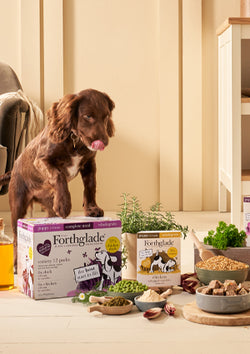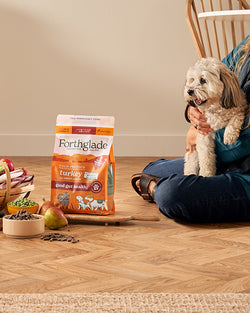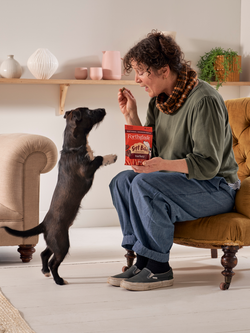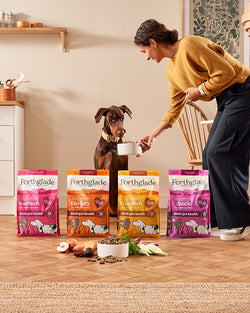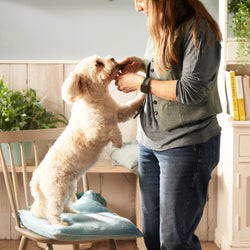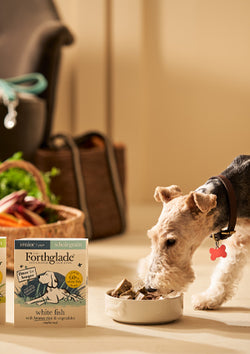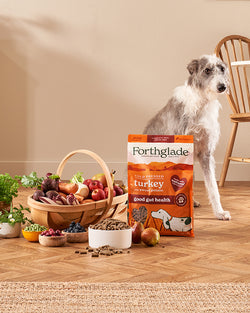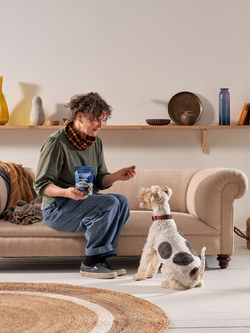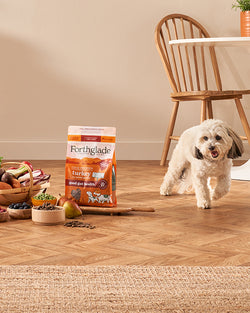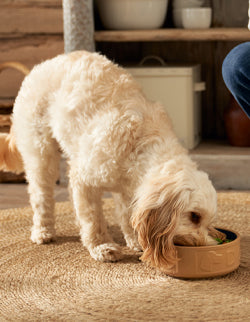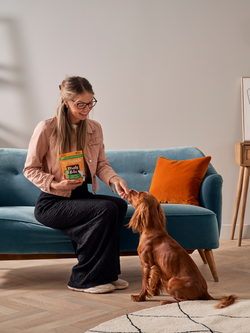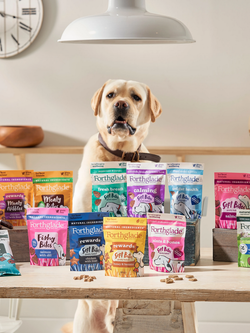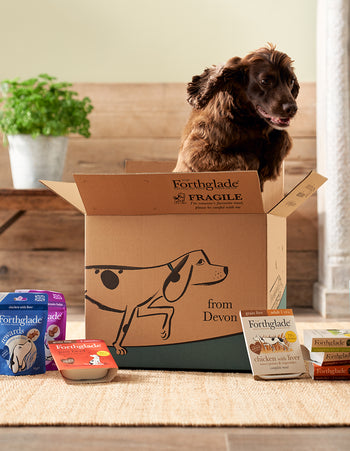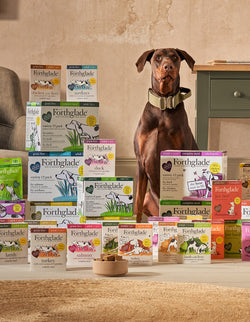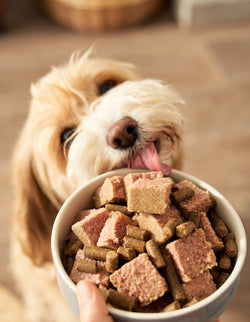Can dogs get hay fever?
If you’ve ever suffered from hay fever, you’ll know just how uncomfortable it can be, constant sneezing, itchy eyes, and that ever-present tickle in your nose. But did you know our canine companions can experience similar discomfort during pollen season too?
While dogs don’t experience hay fever in exactly the same way as humans, they can suffer from pollen allergies. Canine hay fever also known as atopy or atopic dermatitis affects a growing number of dogs in the UK, especially during spring and summer.
Understanding the signs and knowing how to help can make a big difference to your dog’s comfort and wellbeing.

What are the symptoms of hay fever in dogs?
Unlike humans, who often suffer with sneezing fits and watery eyes, the most common hay fever symptoms in dogs usually show up on the skin. This can sometimes be mistaken for a food allergy or even a skin condition. Here are some common signs of dog hay fever to look out for:
- Itchy, red or inflamed skin
- Excessive scratching or licking
- Flaky or dry skin
- Rubbing face or ears on furniture or the floor
- Sneezing
- Watery or red eyes
- Runny nose
- Paw chewing
It's worth noting that skin irritation is usually the main symptom of hay fever in dogs. If you're unsure whether your dog is reacting to pollen or something in their food, it's best to read our guide on food allergies in dogs for more information

Dog hay fever treatment
If you suspect your dog is suffering from hay fever, there are several treatment options available – but it’s important to speak to your vet before trying anything new. Common dog hay fever treatments include:
- Medicated shampoos and topical creams to soothe irritated skin
- Antihistamines prescribed by a vet (not human tablets, more on that below)
- Eye drops to ease irritation
- Nasal sprays suitable for dogs
- Steroid treatment for more severe reactions
- Regular baths to remove pollen from their fur and skin
Can dogs have hay fever tablets?
This is one of the most common questions dog owners ask. While some antihistamines are safe for dogs, many hay fever tablets designed for humans can be toxic for pets.
Never give your dog medication without first consulting your vet. They’ll be able to recommend a safe and effective option, as well as the correct dosage based on your dog’s weight, age, and overall health.

Types of pollen your dog may be allergic to
Just like humans, dogs can react to different types of pollen. Here’s a quick guide to help you identify potential triggers and find ways to ease your dog’s symptoms:
Tree pollen
Tree pollen is most active in early spring. To help your dog if they’re allergic to tree pollen:
- Wipe their paws and belly after walks
- Keep windows closed during peak pollen times
- Use air purifiers indoors to reduce pollen levels
- Bathe your dog more frequently during tree pollen season
Grass pollen
Grass pollen tends to peak from late spring to early summer and it's one of the most common culprits. To ease symptoms:
- Stick to early morning or late evening walks when pollen counts are lower
- Avoid freshly cut grass and overgrown fields
- Rinse or wipe your dog’s coat after time outdoors
- Cut your lawn regularly to prevent high pollen build-up
Weed pollen
Weed pollen becomes more of an issue in late summer into autumn. Here’s how to help your dog cope:
- Limit time in areas with high weed growth
- Vacuum regularly to remove pollen from indoor spaces
- Consider hypoallergenic bedding
- Keep garden weeds under control
Managing hay fever in dogs
Aside from medical treatments, there are plenty of simple, natural ways to reduce your dog’s exposure to pollen and help them feel more comfortable:
- Wash your dog’s bedding regularly to keep pollen at bay
- Wipe their paws and fur after walks, especially after walks in grassy or wooded areas
- Vacuum your home often to remove pollen particles from carpets and soft furnishings
- Keep your dog indoors during high pollen times (usually mid-morning and early evening)
- Walk your dog early in the morning, when pollen levels are lower. It's also safer for avoiding heatstroke in dogs during summer
- Consider an air purifier if your dog spends a lot of time indoors
- Use dog-safe eye wipes to gently clean around their eyes
These little lifestyle changes can go a long way in managing symptoms and keeping your pup happy and itch-free.

Takeaway
Dogs can get hay fever, and it often shows up as irritated or itchy skin rather than sneezing and watery eyes like in humans. If your dog is scratching more than usual, has flaky skin, or seems uncomfortable during pollen season, it could be a sign of canine hay fever.
While it’s tempting to reach for human antihistamines, remember: never give your dog medication without veterinary advice, as some human medicine can be harmful.
Thankfully, there are plenty of ways you can help at home, from washing paws to choosing the right time for walks. If your dog needs extra support, your vet can recommend safe and effective treatments tailored to their needs.
Want to support your dog's health from the inside out?
Shop our natural dog food, made with wholesome ingredients to help keep your dog thriving all year round.

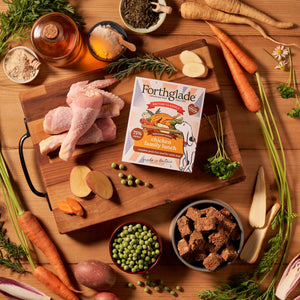
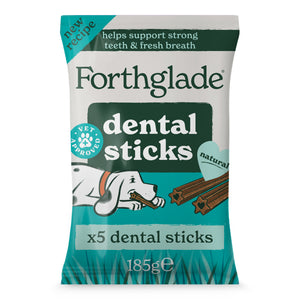

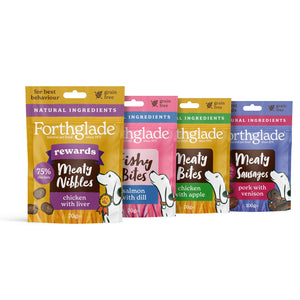



 Over 12,000 5* Reviews
Over 12,000 5* Reviews
 Subscribe & Save At Least 10% Off Every Order!
Subscribe & Save At Least 10% Off Every Order!


